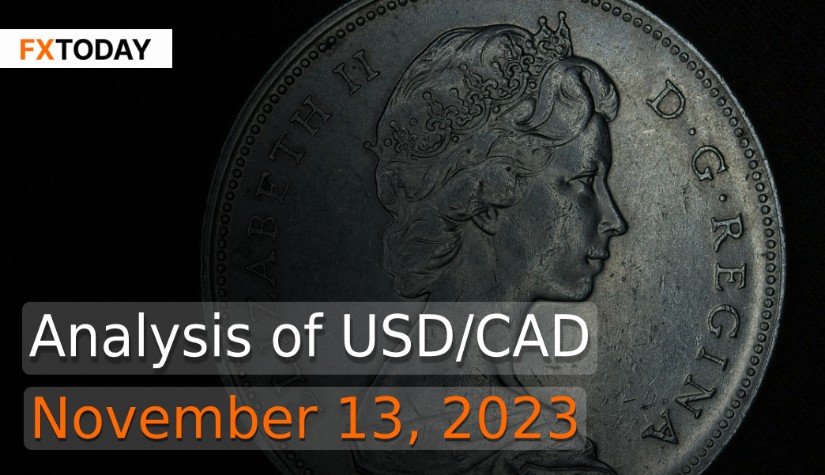BoC Warns of Rising Rates Amid Housing Challenges
In October, Canada's economic activity experienced a slight acceleration, accompanied by a decrease in the Ivey Purchasing Managers Index (PMI) measure of prices, reaching its lowest point in six months. However, the Bank of Canada, led by Governor Tiff Macklem, expressed concerns about the disconnect between the government's spending and the central bank's efforts to control inflation and interest rates. This disconnect is particularly impactful on mortgages and homeownership in the country.
Macklem stressed the importance of aligning fiscal and monetary policies to effectively combat inflation. However, the government's current economic approach is under scrutiny for its potential adverse effects on Canadians' ability to secure affordable mortgages. The Bank of Canada's aggressive strategy, involving ten interest rate hikes within 19 months, has led to a substantial 150% increase in mortgage payments for an average family home since 2015.
The financial strain on Canadian households is evident in surveys highlighting growing stress due to economic conditions. Construction costs have surged due to high interest rates and a weak Canadian dollar, further pressuring the housing market. A mortgage survey revealed an alarming trend of increased mortgage defaults and forced sales, raising concerns about the potential loss of homes. Despite promises made in 2015 to enhance affordable housing availability, the reality has seen rents, mortgage payments, and down payments all doubling, compounded by a decrease in nationwide housing starts, reflecting poorly on the government's commitments.
Senior Deputy Governor Carolyn Rogers at the Bank of Canada cautioned about persistently high interest rates due to global structural transformations, escalating government debt, and geopolitical risks. She highlighted the impact of these changes on Canadians' spending and credit habits. Rogers warned of potential further rate increases and emphasized the need for gradual adjustments to avoid destabilizing the financial system.
The Bank of Canada recently announced the end of the era of super-low interest rates, warning businesses and households to prepare for higher borrowing costs. The current policy rate is at a 22-year high of 5.0%, and the bank expects economic growth to be muted until the end of 2024, with inflation staying above the 2% target until 2025.
The Canadian government plans to release its annual fall economic statement on Nov. 21, addressing the state of the economy and outlining measures to create jobs, build homes, and improve affordability.
In the international context, the U.S. Federal Reserve, led by Chair Jerome Powell, is evaluating the possibility of further rate hikes to combat inflation. The U.S. faces the risk of a federal government shutdown if lawmakers in Washington fail to pass a measure for temporary funding before Friday.
U.S. consumer sentiment has fallen for a fourth straight month, and inflation expectations remain high, posing challenges for the Federal Reserve in managing economic expectations. Gasoline prices, a key factor in shaping consumer views on inflation, reached their highest levels of the year in the November survey by the University of Michigan.
Upcoming data on consumer price inflation and retail sales are anticipated to provide insights into the likelihood of further interest rate increases. The market awaits October's U.S. consumer price data on Tuesday to gauge the Fed's progress in reducing inflation from last year's multi-decade highs.
A more pronounced cooling in economic indicators, especially influenced by October's employment report indicating easing labor market conditions, could intensify discussions about reaching peak interest rates. The release of producer price data, retail sales figures for October expected to dip into negative territory, and reports on industrial production, housing starts, and initial jobless claims will offer additional perspectives. Therefore the Canadian Dollar is anticipated to experience some mild pressure at this point, amid the ongoing fluctuations or stability of the U.S. dollar within the higher range since September of the previous year.
Data for Technical Analysis (1H) CFD USD/CAD
Resistance : 1.3816, 1.3818, 1.3822
Support : 1.3808, 1.3806, 1.3802
1H Outlook
Source: Investing.com
Buy/Long 1 If the support at the price range 1.3798 - 1.3808 is touched, but the support at 1.3808 cannot be broken, the TP may be set around 1.3818 and the SL around 1.3793, or up to the risk appetite.
Buy/Long 2 If the resistance can be broken at the price range of 1.3816 - 1.3826, TP may be set around 1.3830 and SL around 1.3803, or up to the risk appetite.
Sell/Short 1 If the resistance at the price range 1.3816 - 1.3826 is touched, but the resistance 1.3816 cannot be broken, the TP may be set around 1.3808 and the SL around 1.3831, or up to the risk appetite.
Sell/Short 2 If the support can be broken at the price range of 1.3798 - 1.3808, TP may be set around 1.3792 and SL around 1.3821, or up to the risk appetite.
Pivot Points Nov 13, 2023 03:00AM GMT
| Name | S3 | S2 | S1 | Pivot Points | R1 | R2 | R3 |
|---|---|---|---|---|---|---|---|
| Classic | 1.3798 | 1.3802 | 1.3808 | 1.3812 | 1.3818 | 1.3822 | 1.3828 |
| Fibonacci | 1.3802 | 1.3806 | 1.3808 | 1.3812 | 1.3816 | 1.3818 | 1.3822 |
| Camarilla | 1.3812 | 1.3813 | 1.3814 | 1.3812 | 1.3816 | 1.3817 | 1.3818 |
| Woodie's | 1.3800 | 1.3803 | 1.3810 | 1.3813 | 1.3820 | 1.3823 | 1.3830 |
| DeMark's | - | - | 1.3810 | 1.3813 | 1.3821 | - | - |
Sources: Investing 1, Investing 2
Maximize your knowledge: Blog
















